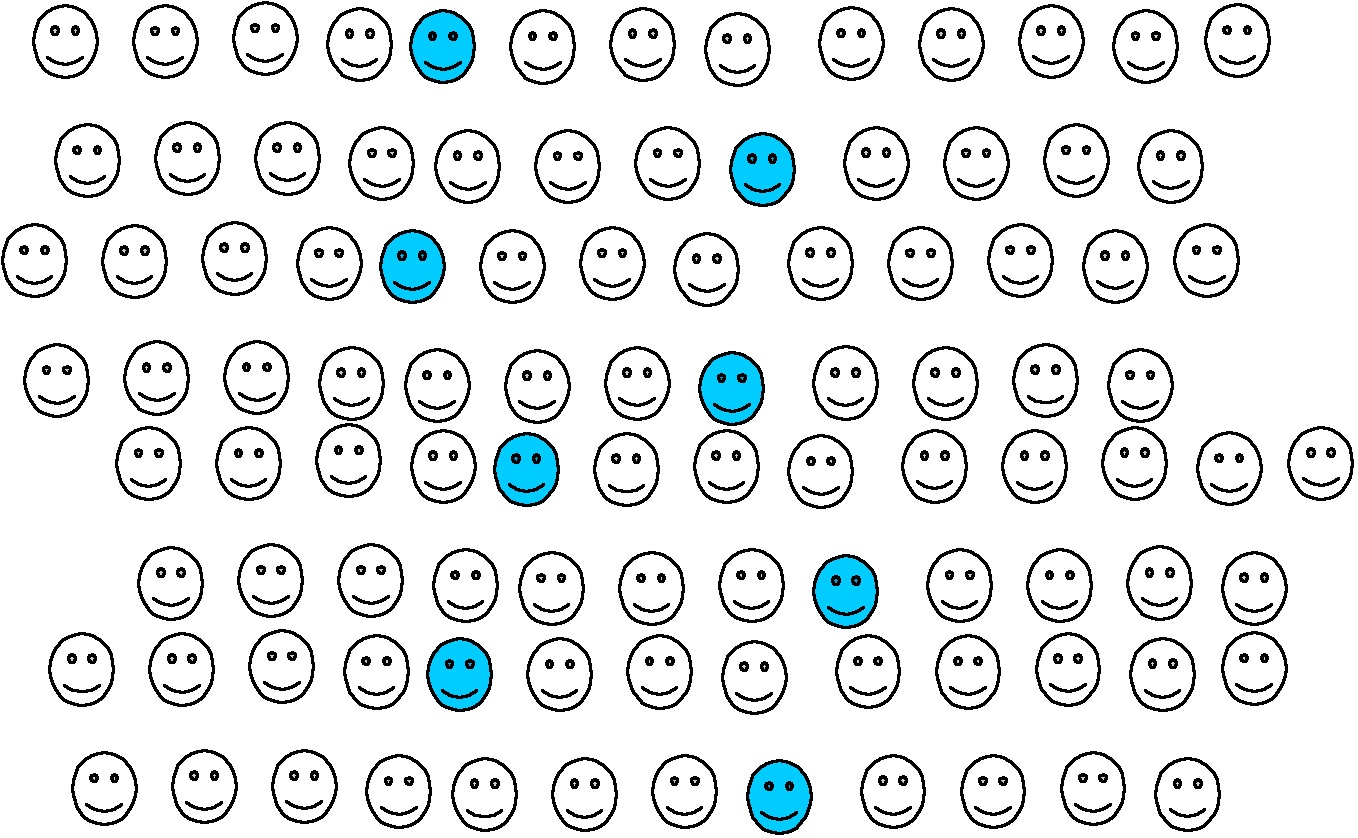Listening: a critical variable in learning mathematics
Posted by: Gary Ernest Davis on: January 23, 2011
Students not listening
At the beginning of every semester I talk students through the written instructions on the website for the mathematics course they are taking. This semester, Spring 2011, those courses are Differential Equations, and Mathematical Statistics.
I talk the students through course arrangements including submission of written material using LaTeX for writing mathematics, the structure of the course, assessment procedures, and behavior in class, among other things.
As the course progresses students work on projects, of 2-3 weeks duration, and write their findings progressively on a blog.
Often I will stop the class for a short explanation of a mathematical point that is causing more than one student difficulty, or stop to explain how to format their blogs, how to write a particular expression using LaTeX, or how to use software to do a certain task.
Almost every time I do one of these things I will have at least one, student, and often several, asking me the same question that I just explained.
For example, a student might ask me how to format dy/dx as in latex, so I will stop the class and give a short explanation.
Several minutes later, another student, often several, will ask the same question over again: “How do you format dy/dx in LaTeX?”
What’s happening? Weren’t they listening?
Sometimes such questions will come later in a class, or in a following class, where I might charitably imagine they have forgotten my answer.
Focus of attention
After many years of reflecting on this problem of students apparently not listening I have come to the conclusion that it is an issue of focus of attention.
Sometimes this is obvious: when a student is reading or clicking on, a web site, or texting on a cell phone as I am talking.
Those instances I jump on right way and remove persistent offenders from class temporarily.
Yet even this gross off-task behavior is evidence of a failure to focus attention because these issues of texting and web surfing during explanations are dealt with explicitly in writing and in talk at the beginning of the course. The offending students did not pay attention when these issues were discussed.
Sometimes students will appear to be paying attention, to be genuinely listening, and then ask me several minutes later to answer what I just discussed.
Those students, in my experience, have their thoughts elsewhere during my explanation.
In short, there are many college mathematics students who do not seem to know what it means to focus their attention and listen to a verbal explanation.
Because we currently have no way of knowing in class what is actually going through a students mind as they hear us talk, we do not know what is their focus of attention, and whether or not they are listening and processing what we are saying.
Do mathematics teachers listen?
The answer, sadly, is not often.
I have observed many of my own colleagues who simply talk at students for extended periods – up to 40 minutes at a time – with very little input from students.
Even more telling (and more scientific) a brief study I carried out with several years ago with colleagues (pme30_Dalton_Davis_Hegedus) shows that many high school teachers (in fact, all those we studied) ask questions at a very high and uniform rate – about on question every 10 -15 seconds, but rarely wait any longer than 3 seconds for a student answer. Over the course of a semester this means that a high school mathematics teacher is likely to ask many thousand of times the questions asked by their students.
Mathematics teachers in other words, are in the main not listening to their students, but bombarding them with questions instead.
Then they do not wait long enough for students to come up with a thoughtful answer.
So where is listening being modeled for students?
Not by teachers, in my experience.
Why is listening so important in mathematics classes?
Mathematics is too broad and deep a subject for student to progress far by “discovering” mathematics.
Mathematical knowledge is largely cultural knowledge, obtained through the thought and work of individuals or groups of people working together on mathematical problems.
When a solution to a hard mathematical problem, or a new method for approaching a problem, is found, that knowledge is spread to other interested people by the written and spoken word.
In other words, mathematics is spread from people with ideas to others who are interested.
The issue in learning mathematics is to take on board, as your own, a procedure, method, or way of thinking, of someone else.
It is a process of bringing the outside cultural knowledge of mathematics inside your own brain, and taking on board someone else’s ideas.
This requires a strong focus of attention, and, in the case of verbal transmission, strong listening skills.
Without those skills of focus of attention and listening, learning mathematics becomes very difficult.
What prompts focus of attention?
In one word? INTEREST
Those pesky percentages
Posted by: Gary Ernest Davis on: January 13, 2011
Percentages seem to be a perennial problem.
Many people have trouble figuring out percentages when circumstances – usually something at work – requires them to do so.
Even the venerable Bill O’Reilly has troubles with percentages, as the following video clip shows:
<object width=”640″ height=”390″><param name=”movie” value=”http://www.youtube.com/v/04EQkUS0_Y4?fs=1&hl=en_US”></param><param name=”allowFullScreen” value=”true”></param><param name=”allowscriptaccess” value=”always”></param><embed src=”http://www.youtube.com/v/04EQkUS0_Y4?fs=1&hl=en_US” type=”application/x-shockwave-flash” allowscriptaccess=”always” allowfullscreen=”true” width=”640″ height=”390″></embed></object>
Bill says that percentages will be lower in Canada because they have a smaller population. But of course, percentages are rates: so many per 100 – and do not vary with population size.
Does this mean that Bill is stupid?
No, it means he is confused about what percentages mean.
He seems to think that percentages – of anything -Â will be lower for a smaller population.
He is not alone in this thinking, and all it means is that, like many people, he does not have good models for thinking about percentages.
What’s a useful model for thinking about percentages?
One way to think about percentages is as rates, or amounts per 100 lots.
For example, if a teacher knows that, on average, 2 students in every 25 will need special attention for algebra, how does that convert as a percentage, expressed as a rate per 100?
To figure a percentage, the population of 25 has to be related to a polulation size of 100. Of course it’s an easy calculation to see that :
So in a population of 100 students there will be, on average, 8 students who need special attention for algebra.
This is 8 students for every 100 students, which we write as 8 percent or as 8%, where the “%” sign means “per 100”.
What if, in a small town of 1400 houses, 200 need new driveway paving? What percentage of the population is it that needs new driveway paving?
200 houses in 1400 is 1 in every 7. To figure this as a percentage – as a rate per 100 – we need to relate 7 to 100. This is a less easy calculation: which is nearly 100.
This means that 200 houses in 1400 is nearly 14% – 14 houses per 100.
A financier, contractor, or accountant might want a more accurate estimate than .
They might want to scale up to 1,000,000 houses, so they might want to know much more accurately how many 7’s there are in 100.
Commonly the answers to such questions are expressed not as fractions – -Â but as a decimal –
.This is still not absolutely accurate but is more accurate than estimating
as 14.
So, with this slightly more accurate calculation, 200 houses in 1400 is approximately 14.29%.
But what does this mean?
We can’t have 14.29 houses for every 100 houses: 0.29 of a house is not something we can imagine.
No, it’s not, and we are not supposed to.
If we want to deal only with whole numbers we stop with 14%: 14 per 100.
But a contractor might want to know what does a rate of 14.29% mean for 1,000,000 houses: 14.29 for every 100 means 142,900 for every 1,000,000.
So percentages expressed as decimals are a useful bookkeeping device for comparing rates across different populations.
The percentage calculation compares a rate to an amount per 100.
Another percentage calculation is to figure Shaquille O’Neal’s field goal percentage (FG%) during the 2008-09 season, given that he scored 609 times out of 1,000. FG% is usually written as a 3 digit decimal, in this case .
But this is NOT a percentage: . Shaq O’Neill scored 60.9% of the time.
Why 100? Why not 1000? 1,000,000? Or some other number?
The origins lie, apparently, in commercial practice in the Middle Ages. Monetary units of size 100 were commonly used to compare prices, and the terminology “per cent” ( “for every 100”) came into common use. Ancient Greeks also compared amounts to standardized amounts per 100, but did his is ratios, because they dd not have fractions or decimal numbers.
Postscript
Percentages, particularly those involving change, fool not only TV personalities, but scientists and science writers as well.
The article “Lots of Inumerate Ink: Penguins suffer when tagged. Do the math. Most journos didn’t.” discusses a Nature article on flipper-banding of penguins. They report:
The paper and Nature’s summary for reporters both say that flipper-banded penguins had a 16 percent lower ten-year survival rate. ![]()
By contrast, the accompanying data results table says that chances of surviving for ten years fell from 0.36 to 0.20. Well, subtract those two and one does get 0.16 or 16 points difference, but as our alert AP man saw, what’s important is not that the rate fell 16 points but that 0.20 is about a 44 percent drop from 0.36.
The relevant calculation for the fractional change is and, of course,




